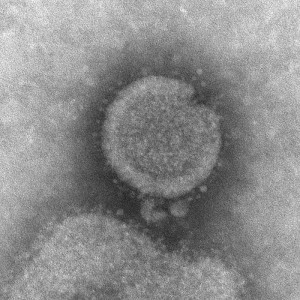An experimental vaccine to protect people against H7N9 avian influenza prompted immune responses in 59 percent of volunteers who received two injections at the lowest dosage tested, but only if the vaccine was mixed with adjuvant — a substance that boosts the body’s response to vaccination. Without adjuvant, immune responses produced by the investigational vaccine were minimal regardless of vaccine dosage, according to findings from a clinical trial sponsored by the National Institute of Allergy and Infectious Diseases (NIAID), part of the National Institutes of Health.

Image/CDC
The Phase 2 trial enrolled 700 healthy adults aged 19 to 64 years old at four NIAID-sponsored Vaccine and Treatment Evaluation Units (VTEU) in the United States. It was led by Mark J. Mulligan, M.D., of Emory University, Atlanta. Results appear in the current issue of the Journal of the American Medical Association.
The first recognized human H7N9 avian influenza cases occurred in China in early 2013. Most people who have become infected with the virus had contact with infected poultry. The virus does not sicken birds, but can cause people to become seriously ill, with approximately 67 percent of reported cases requiring hospitalization. As of September 4, 2014, a total of 452 laboratory confirmed cases, including 166 deaths, had been reported to the World Health Organization.
“Although this influenza virus does not currently spread easily from person to person, all novel influenza viruses have the potential to evolve to cause widespread illness or death,” said NIAID Director Anthony S. Fauci, M.D. “Therefore, it is prudent to conduct clinical trials such as this one to be prepared in the event of an H7N9 avian influenza pandemic.”
The experimental vaccine, made from inactivated H7N9 virus grown in chicken eggs, was manufactured by Sanofi Pasteur (Swiftwater, PA). The adjuvant, MF59, used widely in Europe but not licensed in the United States, was manufactured by Novartis Vaccines (Marburg, Germany) and was mixed with the vaccine just prior to use. Both products were supplied by the Biomedical Advanced Research and Development Authority (a part of the Department of Health and Human Services) from the National Pre-Pandemic Influenza Vaccine Stockpile.
Read the rest of the NIH report HERE

